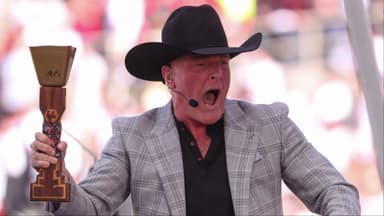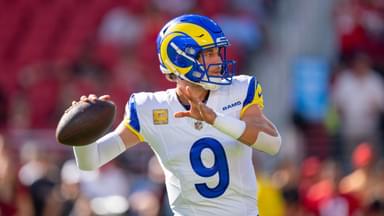It’s pointless to lock the barn gate once the horses have already bolted. Which is exactly what’s happened with the NCAA. After losing its court case, the governing body had no choice but to allow colleges to pay their student-athletes, ushering in the era of Name, Image, and Likeness (NIL). Since then, the landscape of college sports has changed drastically, with schools scrambling to find new revenue streams to keep up with rising player compensation. And, as usual, LSU appears to be leading the charge.
Advertisement
LSU is now planning to sell jersey patches to sponsors—essentially turning their uniforms into advertising space. LSU plans to feature sponsor patches across all sports, from cross country to football, expecting to generate millions of dollars annually. The school is tapping into a previously unexplored revenue stream in college athletics—one that may soon become the norm.
Pat McAfee weighed in on the development, comparing LSU’s move to what’s already common in soccer. There, sponsor logos dominate the front of the jersey, while the team crest is often pushed off to the side. He noted, however, that this still doesn’t go as far as NASCAR, where sponsor logos cover almost every inch of uniforms—even on practice gear.
“I think obviously this is inevitable, I assume. I don’t think football will ever get to the point of like soccer, where soccer’s jerseys just become the company basically in the big thing, and then the team’s crest is just kind of small there. But the patch on practice jerseys, the patch of the actual jerseys, it’s only a matter of time before they NASCARed that. LSU obviously is the first. As soon as LSU gets this done, I assume every other school will do the exact same thing.”
McAfee believes LSU’s bold move could open the floodgates. If they get the green light, it’s not a question of if other programs will follow suit, but when. Still, he doesn’t think every school will jump on board. The former Colts punter argued that more traditional, legacy-driven programs like Ohio State, Michigan, and Notre Dame might resist the shift, valuing tradition and aesthetics over commercialization.
Soccer teams have been earning millions each season through sponsorship patches, though the exact revenue depends on the length of the sponsorship deal and the popularity of the club. Endorsing more prominent brands brings greater payouts—a model that could greatly benefit smaller schools in college athletics.
Programs in the SEC and traditional powerhouses in the Big Ten have long operated with significant financial backing, often finding ways to compensate players even before NIL was legalized. The courts simply formalized this practice by legalizing payments under the NIL framework, removing previous restrictions and allowing schools to spend freely to secure top talent. The promise of earning millions before even going pro has become an irresistible draw for many college athletes.
Smaller schools, however, can’t compete with the financial might of these giants. Historically, they’ve relied on offering development opportunities and playing time to attract recruits. But now, they’re exploring new ways to generate revenue, not just to land better talent, but also to retain the talent they already have.
LSU’s decision to enter uncharted territory by monetizing jersey space could set a precedent. If the new governing body allows the Tigers to move forward with this plan, it may open the door for smaller programs to follow suit, offering them a fighting chance to stay competitive in the NIL era.







